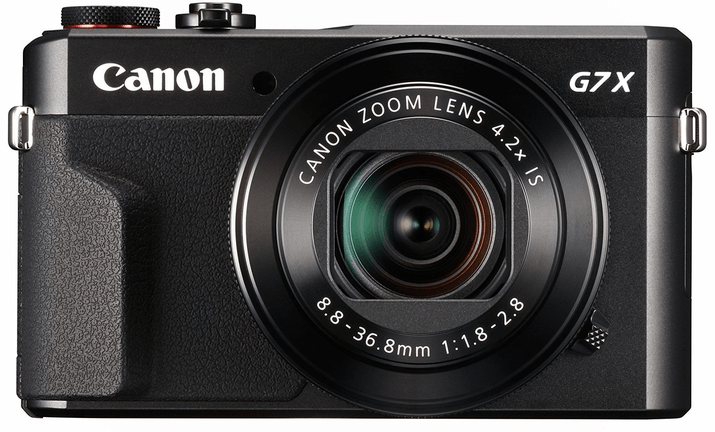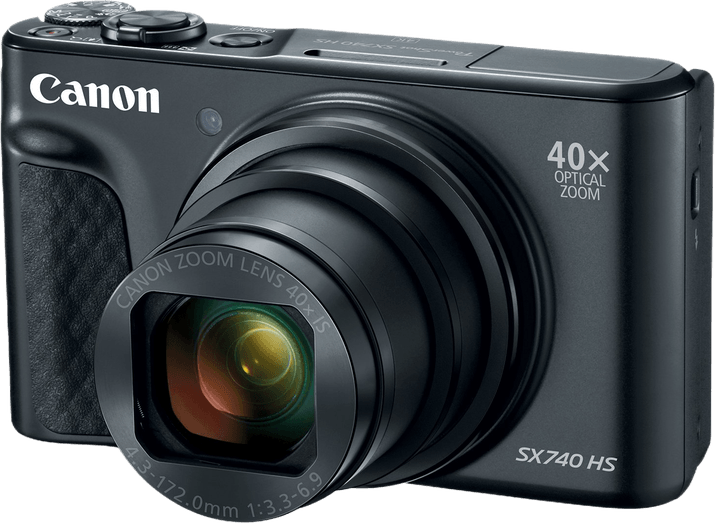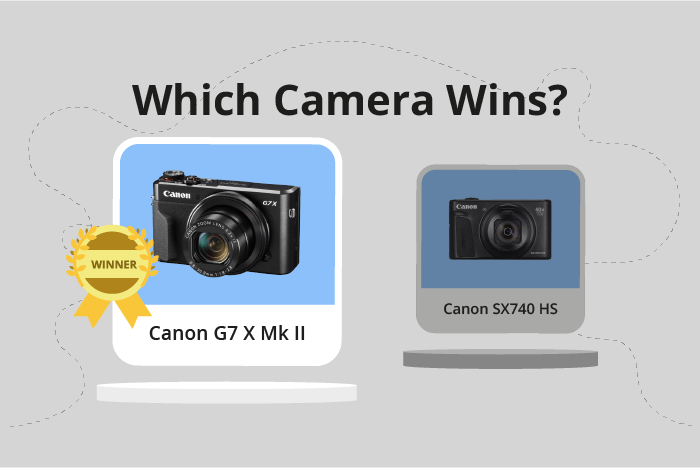Canon PowerShot G7 X Mark II vs PowerShot SX740 HS Comparison
Canon PowerShot G7 X Mark II

Canon PowerShot SX740 HS

The Canon PowerShot G7 X Mark II comes out on top with a score of 59, while the Canon PowerShot SX740 HS trails behind at 53. Both cameras share some common specifications, such as being compact cameras and having similar sizes and weights. The G7 X Mark II is slightly smaller and heavier, measuring 106 x 61 x 42mm and weighing 319g, while the SX740 HS measures 110 x 64 x 40mm and weighs 299g.
The G7 X Mark II is superior in certain aspects, justifying its higher score. It was released in 2016 at the higher launch price of $699. On the other hand, the SX740 HS, released in 2018, has a lower launch price of $399, making it a more budget-friendly option for those looking for a compact camera. While it didn’t score as high as the G7 X Mark II, it still offers decent performance.
Taking all factors into consideration, the Canon PowerShot G7 X Mark II is the better camera, offering superior features and performance. However, the Canon PowerShot SX740 HS is a more affordable alternative for those on a budget.
Canon PowerShot G7 X Mark II vs PowerShot SX740 HS Overview and Optics
The Canon PowerShot G7 X Mark II wins in the optics comparison with a score of 58/100, while the Canon PowerShot SX740 HS scores 55/100. Both cameras have CMOS sensors, fixed lens mounts, and share similarities in megapixels and shooting speed. The G7 X Mark II has 20 megapixels and an 8 fps shooting speed, while the SX740 HS has 21 megapixels and a 10 fps shooting speed.
The G7 X Mark II outperforms the SX740 HS in several aspects. Its larger 1″ sensor size and higher DXOMARK score of 79 contribute to better image quality. The camera also utilizes a Digic 7 processor, which, although older than the Digic 8 in the SX740 HS, still provides excellent performance.
On the other hand, the SX740 HS has some advantages over the G7 X Mark II. It offers a faster shooting speed of 10 fps, which can be beneficial for capturing fast-moving subjects. Additionally, the SX740 HS has built-in image stabilization, which helps reduce the effects of camera shake and results in sharper images.
In terms of optics, the Canon PowerShot G7 X Mark II is the better option due to its larger sensor size and higher sensor performance score. However, the Canon PowerShot SX740 HS may be more suitable for users who prioritize a faster shooting speed and image stabilization. Ultimately, the choice between the two cameras depends on individual preferences and specific photography needs.
Canon PowerShot G7 X Mark II vs PowerShot SX740 HS Video Performance
The Canon PowerShot SX740 HS outperforms the Canon PowerShot G7 X Mark II in video capabilities with a score of 83/100, a 13-point difference from the G7 X Mark II’s score of 70/100. Both cameras share some common features, including a maximum video frame rate of 60fps and built-in time-lapse functionality. However, the SX740 HS surpasses the G7 X Mark II in certain aspects, making it the better choice for video recording.
The most significant advantage of the SX740 HS is its 4K video resolution, with maximum dimensions of 3840 x 2160. In contrast, the G7 X Mark II only offers Full HD video resolution, with maximum dimensions of 1920 x 1080. This difference means that the SX740 HS captures more detailed and higher quality videos than the G7 X Mark II, providing users with superior visual content.
While the G7 X Mark II does not have any specific advantages in video capabilities over the SX740 HS, it is still a solid choice for those who do not require 4K video resolution. Its Full HD video quality and shared features with the SX740 HS, such as the 60fps frame rate and time-lapse functionality, make it a suitable option for casual video recording.
Considering the video capabilities of both cameras, the Canon PowerShot SX740 HS is the clear winner due to its superior 4K video resolution. This feature allows users to capture high-quality, detailed videos, making it an ideal choice for those seeking advanced video recording capabilities. On the other hand, the Canon PowerShot G7 X Mark II remains a viable option for those who prioritize other camera features and do not require 4K resolution for their video recording needs.
Canon PowerShot G7 X Mark II vs PowerShot SX740 HS Features and Benefits
The Canon PowerShot G7 X Mark II outperforms the Canon PowerShot SX740 HS in features with a score of 70/100 compared to the SX740 HS’s 54/100. Both cameras share similarities such as 3-inch screen size, flip screens, no GPS, WIFI, and Bluetooth.
The G7 X Mark II excels with its touchscreen feature and a higher screen resolution of 1,040,000 dots, compared to the SX740 HS’s 922,000 dots. The touchscreen allows for easier navigation, quicker adjustments, and more efficient control over the camera’s settings. The higher screen resolution provides a clearer and more detailed display for reviewing images and videos.
On the other hand, the SX740 HS lacks a touchscreen and has a lower screen resolution, which may hinder user experience and image viewing quality. However, the SX740 HS may have other advantages not mentioned in the provided specifications.
In comparing the two cameras, the Canon PowerShot G7 X Mark II stands out as the better option in terms of features, with a higher score and more advanced specifications such as the touchscreen and greater screen resolution. The Canon PowerShot SX740 HS, while inferior in these aspects, may still offer other benefits not covered in this comparison.
Ultimately, the Canon PowerShot G7 X Mark II is the more feature-rich camera, making it the preferred choice for those prioritizing advanced specifications and ease of use. The Canon PowerShot SX740 HS may be suitable for users with different priorities or budget constraints.
Canon PowerShot G7 X Mark II vs PowerShot SX740 HS Storage and Battery
The Canon PowerShot G7 X Mark II and the Canon PowerShot SX740 HS perform closely in the storage and battery category. Both cameras have one memory card slot and are compatible with SD, SDHC, and SDXC (UHS-I compatible) memory cards. They also share the same battery type, the NB-13L, and both provide 265 shots per charge.
Both models also offer USB charging capability. This feature allows users to charge the camera using a USB cable, offering more convenience and flexibility.
Canon PowerShot G7 X Mark II vs PowerShot SX740 HS – Our Verdict
Are you still undecided about which camera is right for you? Have a look at these popular comparisons that feature the Canon PowerShot G7 X Mark II or the Canon PowerShot SX740 HS:
- Canon PowerShot G7 X Mark II vs PowerShot G7 X Mark III
- Canon PowerShot G7 X Mark II vs Nikon Coolpix B500
- Canon PowerShot SX740 HS vs Panasonic Lumix ZS200 (TZ200)
- Canon PowerShot G7 X Mark II vs Sony a6100
- Canon PowerShot G7 X Mark II vs Sony Cyber-shot RX100 IV
- Canon PowerShot G7 X Mark II vs Sony ZV-1

